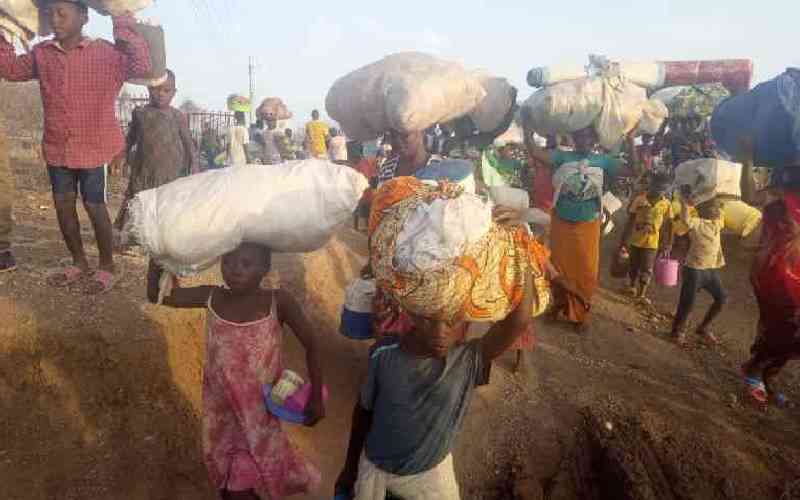 |
|
Food prices have gone up sharply. Analysts say rise in inflation and the weakening of the local currency seen over the last week, might result in high lending rates. [PHOTO: FILE/STANDARD] |
The cost of living during the month of May went up driven by high electricity bills and sharp rise in price of food commodities.
Data from the Kenya National Bureau of Statistics (KNBS) show that inflation rose to 7.3 per cent in May from 6.4 per cent in April, shooting past the Central Bank’s medium term target range of between 5-7 per cent due to rising food prices due to poor harvest, cost of energy and transportation. Analysts project further increases in price of food that could adversely affect the economy.
Notable in pushing up inflation were electricity prices that went up by 21.7 per cent after the country started using power generated by thermal generators. Thermal generators use costly fossil fuels, with this cost being passed directly to the consumers.
Food index
This has been due to failure of the rains over the March–May long rains season that resulted in a dip in water levels at the Seven Forks Hydropower dams that are now generating power way below their capacity.
The shift to electricity generated using diesel has seen the cost of power go up by Sh2 per unit. The dismal rains during the season have also seen prices of common food items go up.
“There was significant rise in prices of several food items including maize flour, potatoes and sukuma wiki… these price increases outweighed falls in the prices of sugar, milk… resulting in an aggregate rise in the food index,” said KNBS.
“Price increases were recorded in respect of electricity, charcoal and firewood. The cost of electricity increase mainly on account of fuel cost adjustment, which rose from 599 cents in April to 722 cents per kilowatt hour in May… the cost of 50 KWh of electricity increase 21.71 per cent mainly to this fuel cost adjustment.”
Razia Khan head of research at Standard Chartered Bank, Africa said the prolonged dry spell Kenya has experienced might dampen growth prospects for the country.
Interest rates
She adds that the rise in inflation and the weakening of the local currency, seen over the last week, might result in high lending rates. “Once again, unseasonably dry weather in Kenya, and the country’s continued reliance on rain-fed agriculture, are helping to pressure prices. However, with indicators pointing to robust underlying momentum in the economy, and strong credit growth (notwithstanding recent security risks), the likelihood of food-related pressures spilling over into secondary effects is high,” she said.
Khan said the rising inflation in Kenya, narrowing the spread with the Central Bank rate (8.5 per cent), as well as nervousness around the softer shilling seen in recent days, should see the CBK resume a modest tightening cycle from July.
“The May inflation print most likely signals the start of a new interest rate cycle in Kenya, although we do not expect interest rates to rise anywhere near as much as they did in the last tightening cycle. A sufficiently early rate hike will help moderate the overall pace of tightening that is required.”
 The Standard Group Plc is a
multi-media organization with investments in media platforms spanning newspaper
print operations, television, radio broadcasting, digital and online services. The
Standard Group is recognized as a leading multi-media house in Kenya with a key
influence in matters of national and international interest.
The Standard Group Plc is a
multi-media organization with investments in media platforms spanning newspaper
print operations, television, radio broadcasting, digital and online services. The
Standard Group is recognized as a leading multi-media house in Kenya with a key
influence in matters of national and international interest.
 The Standard Group Plc is a
multi-media organization with investments in media platforms spanning newspaper
print operations, television, radio broadcasting, digital and online services. The
Standard Group is recognized as a leading multi-media house in Kenya with a key
influence in matters of national and international interest.
The Standard Group Plc is a
multi-media organization with investments in media platforms spanning newspaper
print operations, television, radio broadcasting, digital and online services. The
Standard Group is recognized as a leading multi-media house in Kenya with a key
influence in matters of national and international interest.









